During my MA Game Art group project at Escape Studio, I had the privilege of working during 12 weeks on an Akira inspired retro-futuristic slice of Tokyo. The brief stated to create an environment inspired by Ghost in the shell, Cowboy Bepop, Akira and Stray. Our team of 11 students decided together on a concept that would bring all of these inspiring media together to create a residential neighborhood, full of life and environmental storytelling but still contained to comply with the brief's requirement of having a playable level at high FPS rate.
For this project, I was lead shader artist and supervised the creation of materials and shaders to ensure a smooth creative pipelines for each artists. This involved creating a robust master material before anything else could be implemented in the environment. I took special care in making sure that every single one of my material would be easy to use and cater to the needs of the environment artists so that our project would be cohesive and walk the thin line between neo-futurism and cyberpunk without tipping over too heavily on one side or the other. I also helped with environment set dressing and storytelling, sometimes creating props that could fit nicely with the shader I had made or using in-engine tools such as UE's foliage to place litter around the level.
I learned a ton during this group project, mainly how much I loved working in a team to make sure everybody was communicating and working well together. Leading a specialty within a project taught me organization, research and creative skills that I am looking forward to apply during my last project at Escape Studio.
I must thank my team mates without whom this project would not have happened and who worked tirelessly for three months to create a truly fantastical environment!

Overview of the street.

The Akira inspired staircase.
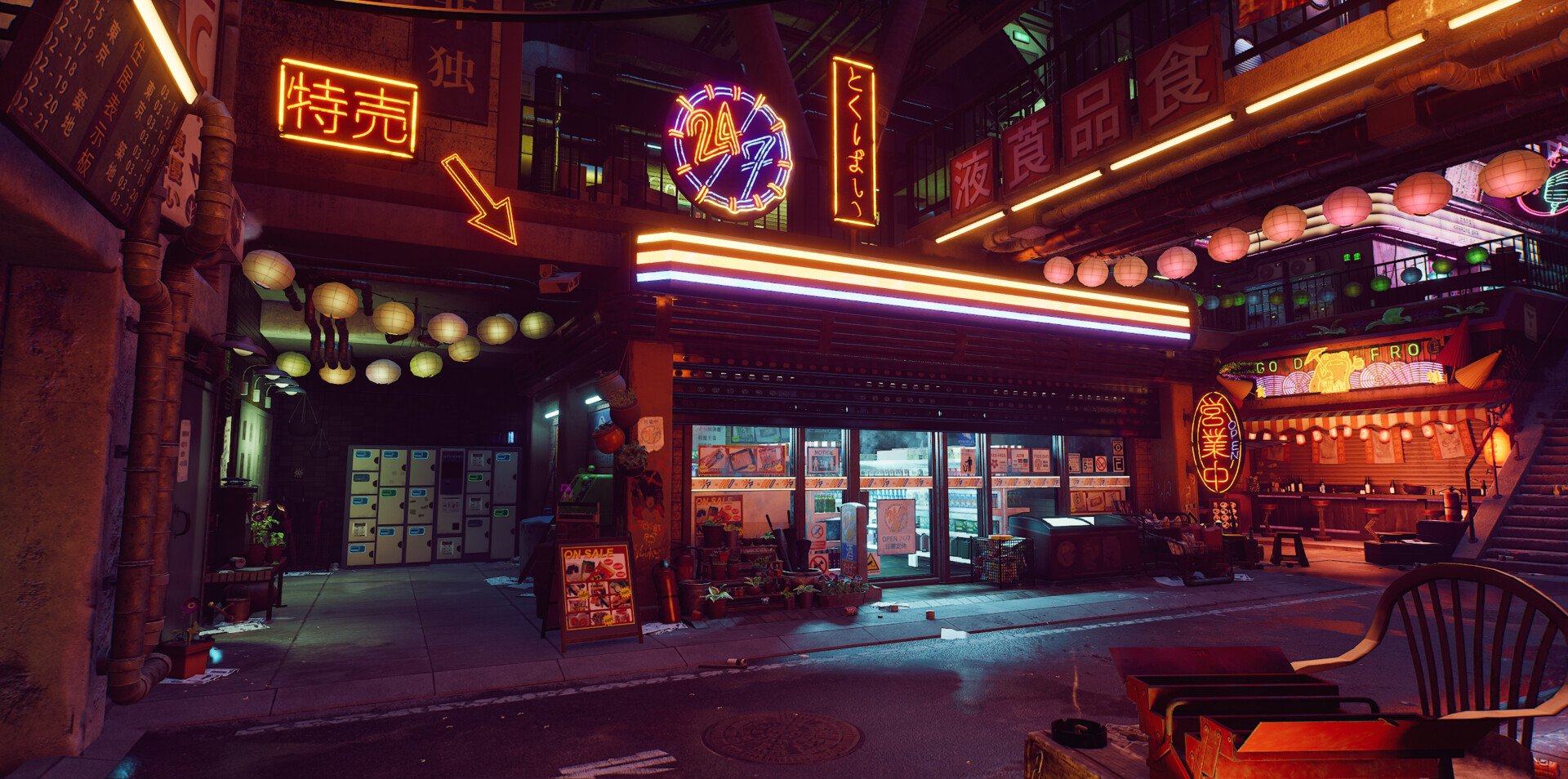
Neo Tokyo's own 24/7 konbini.

The izakaya tucked away behind the convenience store.

The hero asset framed by Neo-Tokyo's skyline.
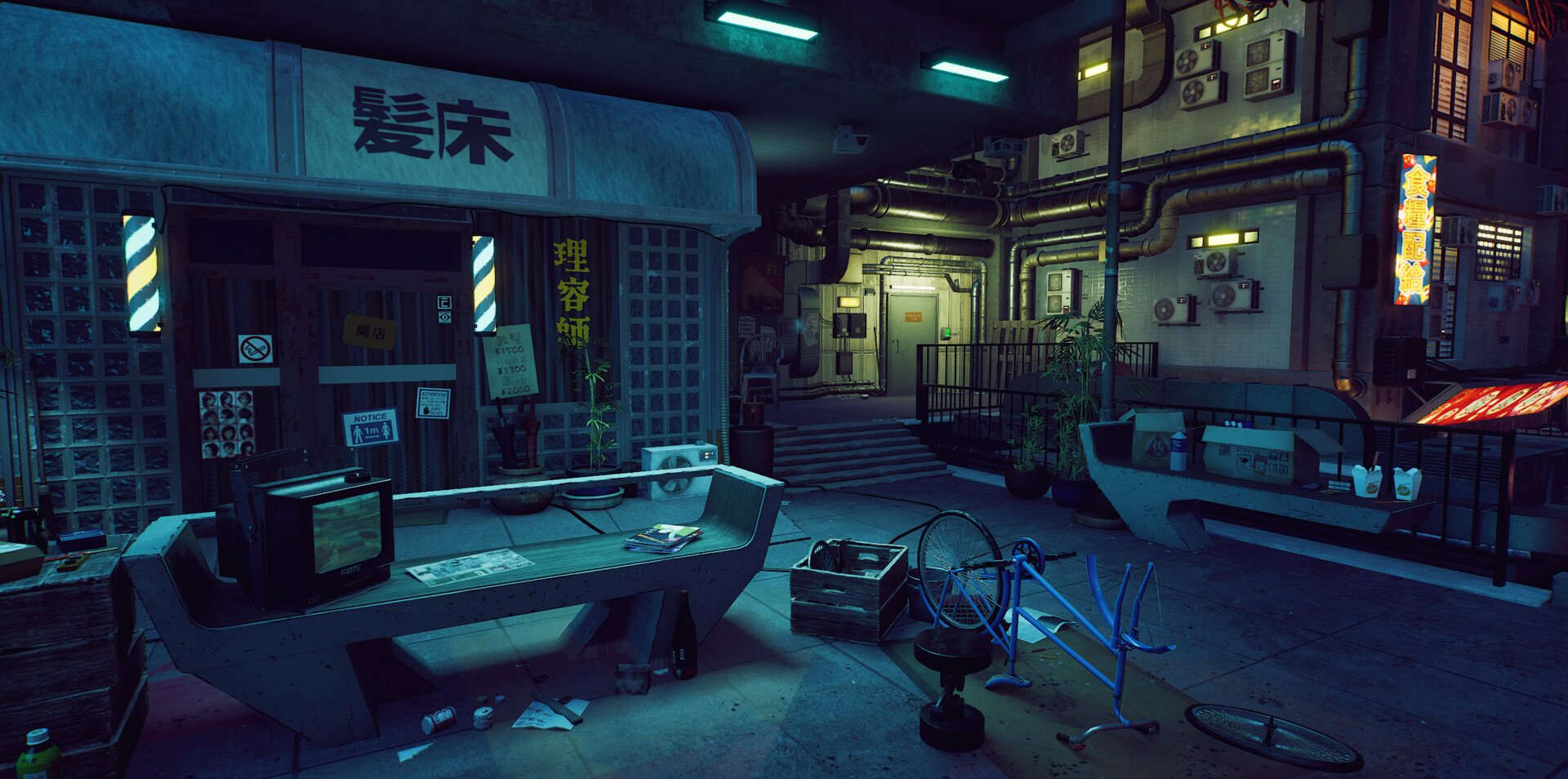
A discreet barber shop and residence building.

The karaoke bar and it's hologram plants.
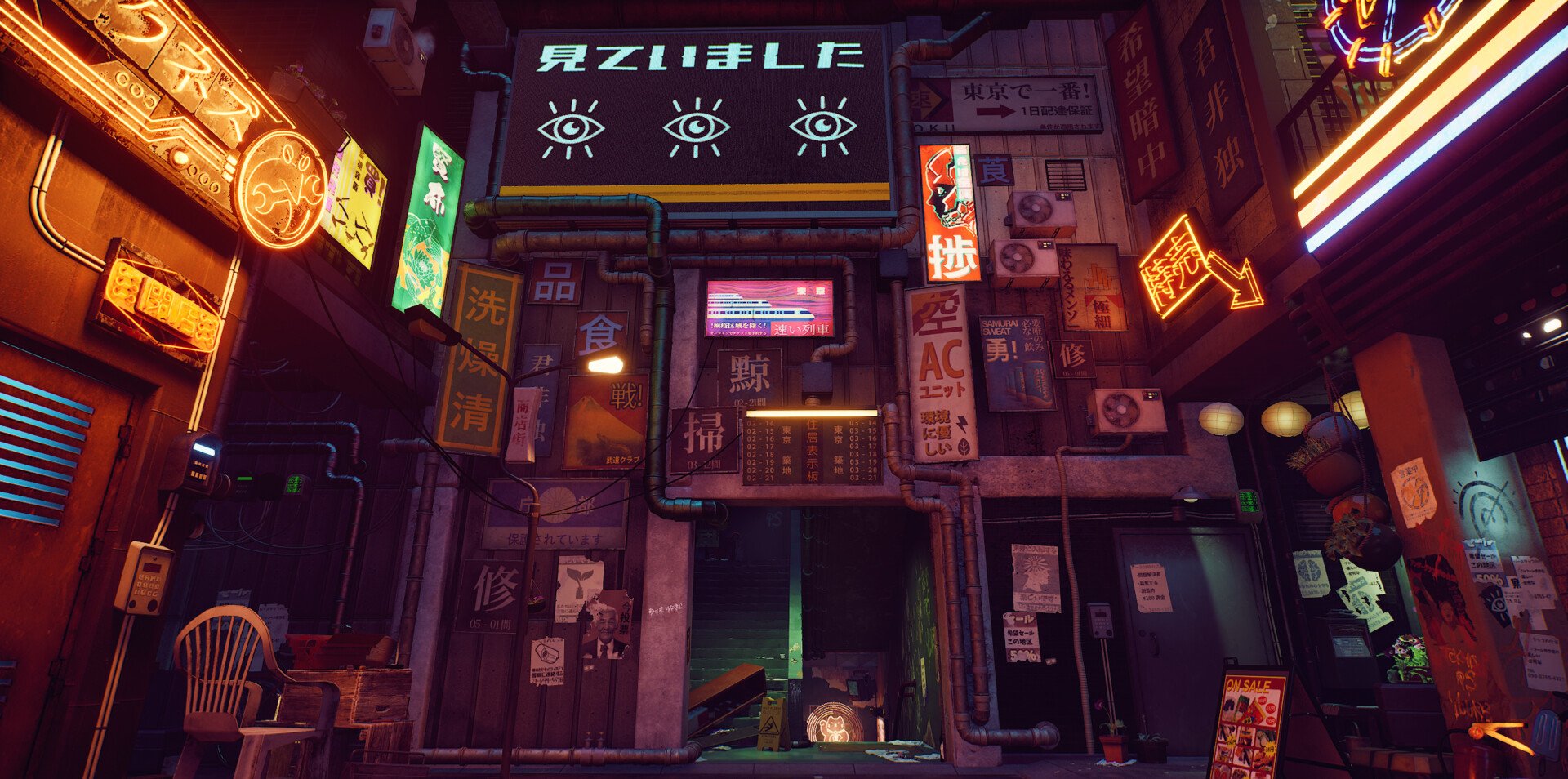
A few of the many billboards in Neo-Tokyo's residential area.

A laundromat in front of a hopscotch game and vending machines.

The neighbourhood's ever helpful tech repair shop.

The project needed a master material that was able to adapt to the needs of different specialty within the project hence the creation of a modular master material with a simple base including tint, brightness and saturation control.

This set of parameters for the master material were used for every single item in the project and was very useful to unify each artist’s vision into a cohesive art style, something that was integral for recreating the Akira art style.

The holograms were intended to add a futuristic, dystopian effect to the scene. Our team wanted a couple of different effects, so I created a few different shaders and we decided which ones worked best for different use in our environment.

The most complex standalone shader was the glitched LCD-Screen shader.

Since the environment has a lot of tall buildings, we needed a way to fill the further-away windows with life. I created a looping shader animation of a shadowy figure walking past the windows.
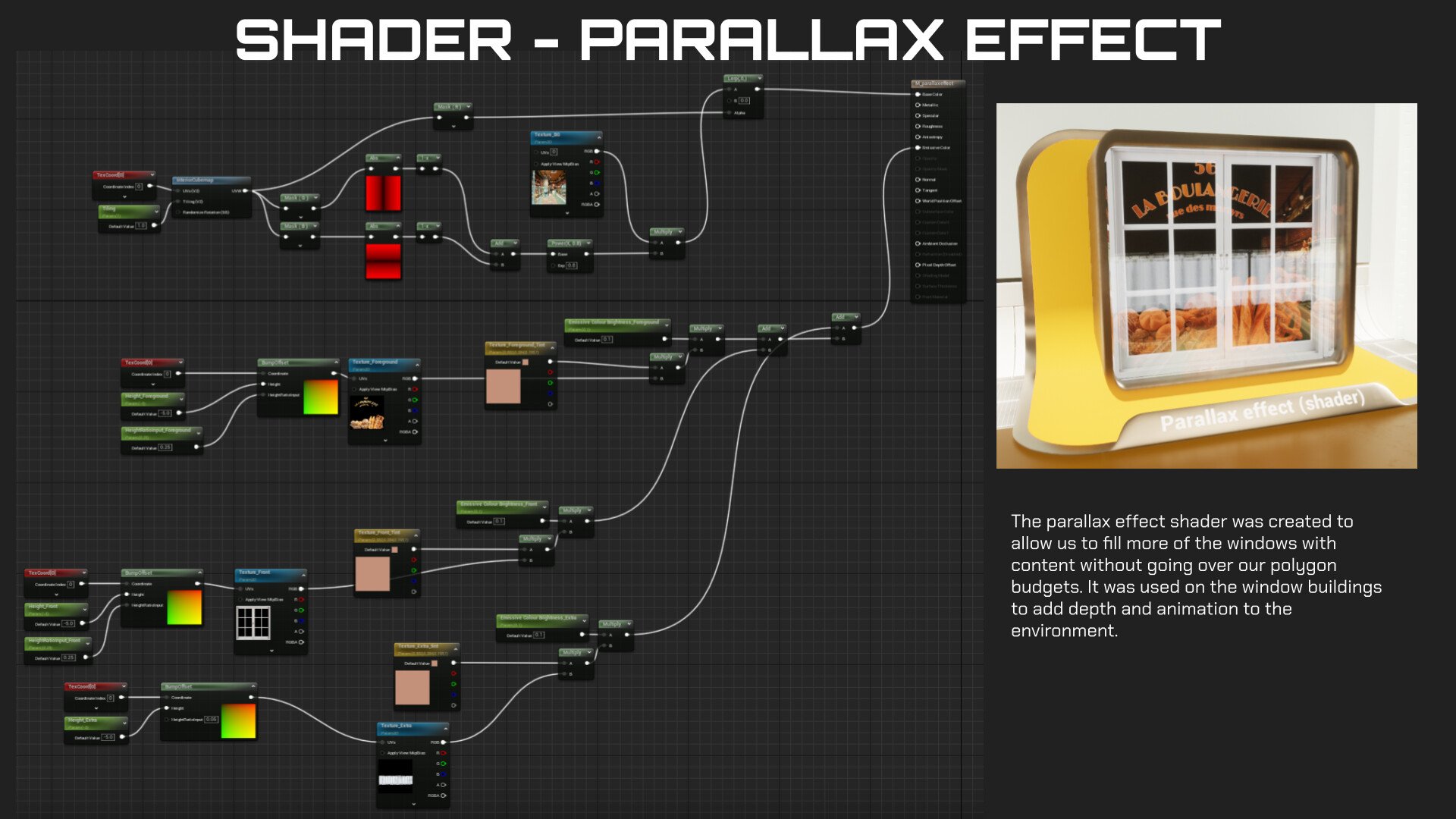
The parallax effect shader was created to allow us to fill more of the windows with content without going over our polygon budgets. It was used on the window buildings to add depth and animation to the environment.

Fitting the dystopian urban aesthetic, we knew we wanted an oil spill effect to dress up the scene whilst still being inconspicuous in the scene.

While most buildings just needed transparent glass, some windows required more texture. We wanted to have broken panes that were more than just an overlay of broken glass effect.

This was a glass shader with rain running down the glass including water streaks that was eventually cut from the project.
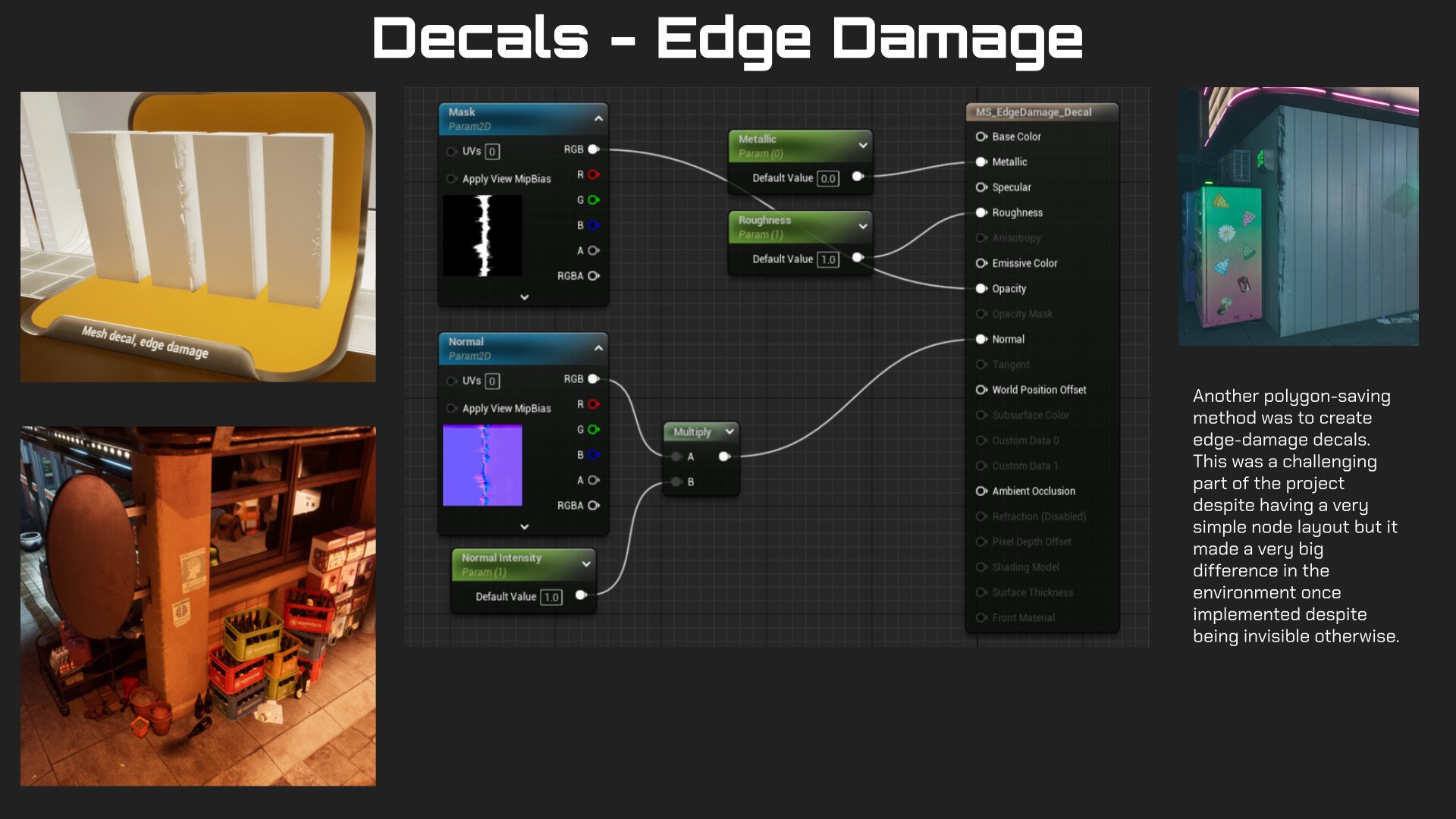
Another polygon-saving method was to create edge-damage decals. This was a challenging part of the project despite having a very simple node layout but it made a very big difference in the environment once implemented despite being invisible otherwise.

I used Unreal Engine’s shader tool to distribute the trash in the environment and make the scene not feel quite as flat.

I contributed a lot of small props to the project that would add to the destitution of the urban scene. A lot of trash was needed and though not very glamorous, ended up being integral for the environment to be believable.
